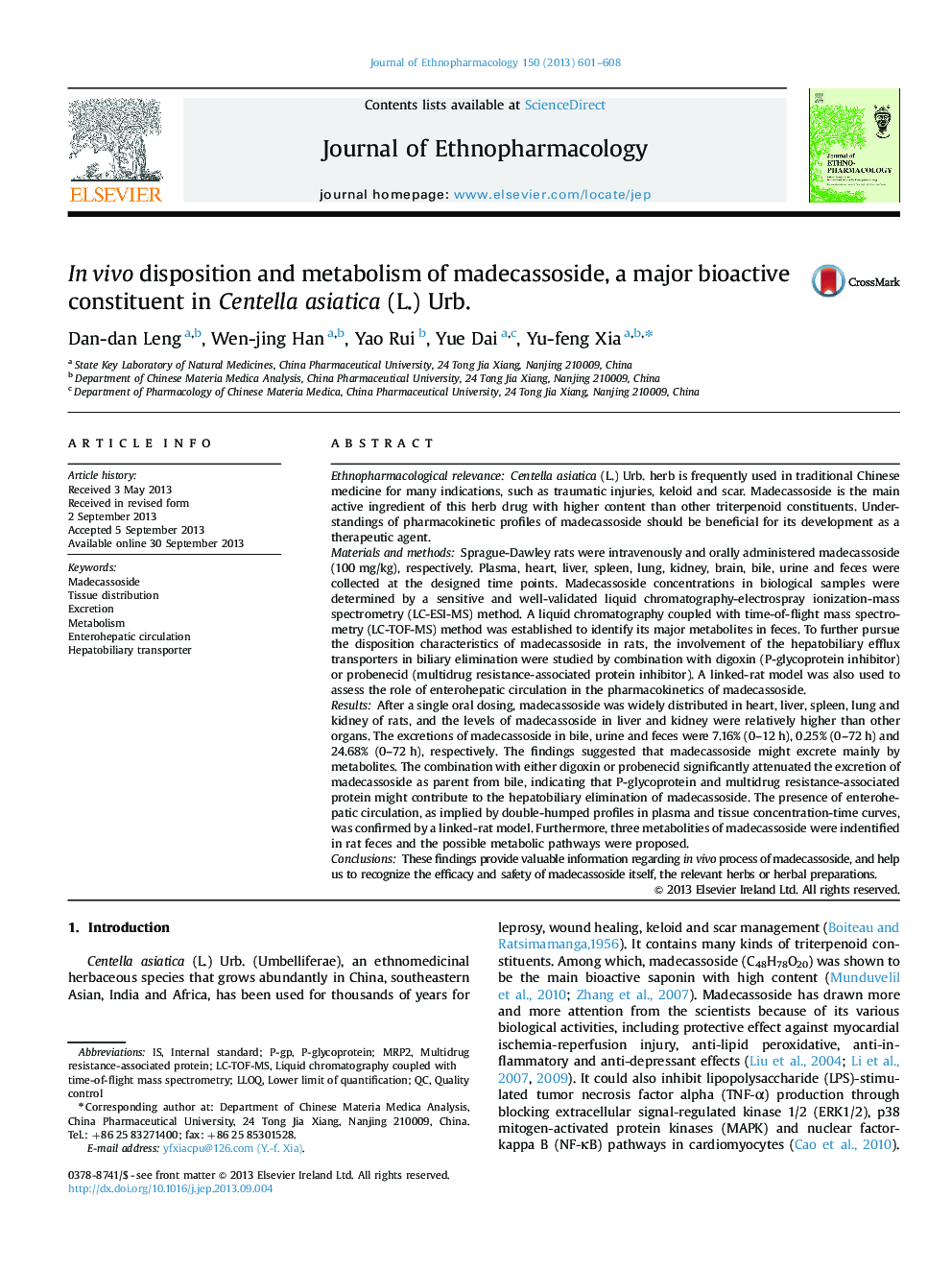| کد مقاله | کد نشریه | سال انتشار | مقاله انگلیسی | نسخه تمام متن |
|---|---|---|---|---|
| 2545449 | 1123955 | 2013 | 8 صفحه PDF | دانلود رایگان |

Ethnopharmacological relevanceCentella asiatica (L.) Urb. herb is frequently used in traditional Chinese medicine for many indications, such as traumatic injuries, keloid and scar. Madecassoside is the main active ingredient of this herb drug with higher content than other triterpenoid constituents. Understandings of pharmacokinetic profiles of madecassoside should be beneficial for its development as a therapeutic agent.Materials and methodsSprague-Dawley rats were intravenously and orally administered madecassoside (100 mg/kg), respectively. Plasma, heart, liver, spleen, lung, kidney, brain, bile, urine and feces were collected at the designed time points. Madecassoside concentrations in biological samples were determined by a sensitive and well-validated liquid chromatography-electrospray ionization-mass spectrometry (LC-ESI-MS) method. A liquid chromatography coupled with time-of-flight mass spectrometry (LC-TOF-MS) method was established to identify its major metabolites in feces. To further pursue the disposition characteristics of madecassoside in rats, the involvement of the hepatobiliary efflux transporters in biliary elimination were studied by combination with digoxin (P-glycoprotein inhibitor) or probenecid (multidrug resistance-associated protein inhibitor). A linked-rat model was also used to assess the role of enterohepatic circulation in the pharmacokinetics of madecassoside.ResultsAfter a single oral dosing, madecassoside was widely distributed in heart, liver, spleen, lung and kidney of rats, and the levels of madecassoside in liver and kidney were relatively higher than other organs. The excretions of madecassoside in bile, urine and feces were 7.16% (0–12 h), 0.25% (0–72 h) and 24.68% (0–72 h), respectively. The findings suggested that madecassoside might excrete mainly by metabolites. The combination with either digoxin or probenecid significantly attenuated the excretion of madecassoside as parent from bile, indicating that P-glycoprotein and multidrug resistance-associated protein might contribute to the hepatobiliary elimination of madecassoside. The presence of enterohepatic circulation, as implied by double-humped profiles in plasma and tissue concentration-time curves, was confirmed by a linked-rat model. Furthermore, three metabolities of madecassoside were indentified in rat feces and the possible metabolic pathways were proposed.ConclusionsThese findings provide valuable information regarding in vivo process of madecassoside, and help us to recognize the efficacy and safety of madecassoside itself, the relevant herbs or herbal preparations.
Figure optionsDownload high-quality image (123 K)Download as PowerPoint slide
Journal: Journal of Ethnopharmacology - Volume 150, Issue 2, 25 November 2013, Pages 601–608